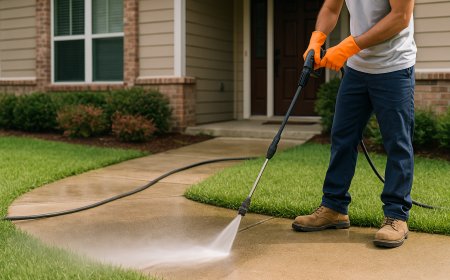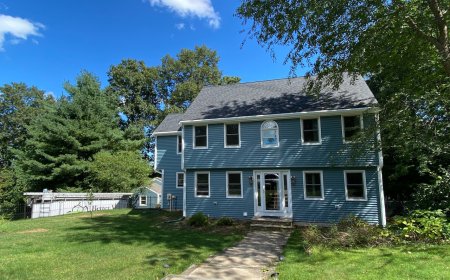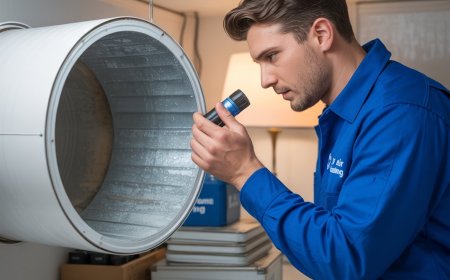Stump Grinding: The Ultimate Guide to Removing Tree Stumps Safely and Effectively
Stump grinding is the fastest, cleanest, and most cost-effective way to reclaim your yard after a tree removal. Whether you're cleaning up your landscape or preparing for a new project, don’t let that old stump stand in your way. Hire a pro—or, if you're feeling handy and confident, grind it yourself with caution. Your yard will thank you.
So you’ve removed a tree, but now you’re stuck with a big ugly stump in your yard. It’s not just an eyesore—it can be a hazard and even attract pests. That’s where stump grinding comes in. This guide walks you through everything you need to know to get rid of that stump the smart way.
Why You Shouldn’t Ignore Tree Stumps
Leaving a tree stump to rot isn’t just lazy landscaping—it can actually cause real issues down the line. From termites and ants to annoying sprouts that keep growing back, that leftover stump can become a nightmare.
What is Stump Grinding?
Stump grinding is a method of removing tree stumps using a specialized machine that chips away the wood into mulch. Instead of digging the stump out completely (which can damage your yard), grinding shaves it down below the surface level, allowing the area to be covered or replanted.
Problems Caused by Leftover Stumps
Attracts Pests and Insects
Old stumps are a dream home for termites, ants, beetles, and even fungi. If left untreated, these pests could eventually move to healthy trees—or worse, your home.
Tripping Hazards
Stumps, especially those hidden by grass, can cause accidents for kids, pets, and anyone mowing the lawn.
Curb Appeal and Property Value
A clean yard shows pride in ownership. Stumps make your yard look neglected, reducing your home’s appeal.
Regrowth Issues
Some tree stumps will continue to sprout shoots and regrow, becoming an ongoing battle in your landscaping.
Stump Grinding vs. Stump Removal
What’s the Difference?
-
Stump Grinding: Grinds the stump down below ground level.
-
Stump Removal: Completely digs out the stump, roots and all.
Pros and Cons of Each Method
| Feature | Stump Grinding | Stump Removal |
|---|---|---|
| Speed | Faster | Slower |
| Cost | More affordable | More expensive |
| Lawn Damage | Minimal | High risk of tearing up yard |
| Root Removal | No | Yes |
Which One Should You Choose?
If you’re replanting or building in that spot, full removal might be better. For most residential yards, stump grinding is quicker, cleaner, and more practical.
How the Stump Grinding Process Works
Step-by-Step Breakdown
-
Inspect the stump for size and location.
-
Set up the grinder near the stump.
-
Grind down several inches below soil level.
-
Clear debris and smooth out the area.
Equipment Used in Stump Grinding
-
Walk-behind stump grinders (for small jobs)
-
Track stump grinders (for large or deep stumps)
-
Protective gear: goggles, gloves, ear protection
What Happens to the Wood Chips?
You can use them as mulch, fill in holes, or have them hauled away. It’s completely up to you.
DIY Stump Grinding vs Hiring a Professional
Is DIY Safe and Practical?
Only if the stump is small, easily accessible, and you’re experienced with machinery. Otherwise, it’s easy to underestimate the power (and danger) of a stump grinder.
What Can Go Wrong?
-
Hitting underground utilities
-
Damaging nearby landscaping
-
Injury from flying debris or machine mishandling
Why Hiring Experts Might Be the Best Bet
A pro brings experience, safety protocols, and equipment you likely don’t have in your shed.
How to Prepare for Stump Grinding
Marking Utility Lines
Call your local utility company to mark any underground lines before work begins. Safety first!
Clearing the Area
Remove rocks, tools, toys, or decorations around the stump. Make it easy to work.
Informing Neighbors (if needed)
Grinding is noisy—giving a heads-up is polite, especially if it’s a shared boundary tree.
Cost of Stump Grinding
Factors That Affect Pricing
-
Stump diameter and height
-
Tree species (some are harder to grind)
-
Location and accessibility
-
Number of stumps
Average Cost per Stump or Inch
-
Per Stump: $75–$300
-
Per Inch (Diameter): $2–$5
-
Multiple Stumps: Discounts often apply
How to Save Money
-
Grind multiple stumps at once
-
Schedule in off-peak seasons
-
Bundle with other tree services
Aftercare and Cleanup
Should You Remove the Wood Chips?
Only if you’re planting grass or paving the area. Otherwise, they make excellent mulch.
Replanting After Stump Grinding
Wait a few months to allow the area to settle. Mix in fresh soil and compost before planting.
Lawn Repair Tips
-
Rake and level the ground
-
Add topsoil and grass seed
-
Water consistently for the first few weeks
Environmental Impact of Stump Grinding
Is it Eco-Friendly?
Yes! Grinding is far less invasive than full removal. Plus, the mulch created can be reused around your yard.
Recycling Wood Chips and Mulch
Use the mulch in garden beds, pathways, or as compost material. It’s a win-win for your yard and the environment.
Frequently Asked Questions
Q1: How deep should a stump be ground?
A: Typically, 4 to 6 inches below ground level is enough for grass or plants to grow over.
Q2: Can a tree grow back after stump grinding?
A: Unlikely, especially if the stump is ground thoroughly. However, some species like willow or maple may sprout if roots remain.
Q3: Is stump grinding safe for nearby plants?
A: Yes, as long as the grinder is operated carefully. Inform your technician about nearby shrubs or flowers.
Q4: Will grinding damage underground pipes or cables?
A: Not if utility lines are marked beforehand. Always call 811 before digging.
Q5: How soon can I plant in the same spot?
A: Wait 2–3 months for the soil to settle and break down wood chips before planting something new.
Conclusion
Stump grinding is the fastest, cleanest, and most cost-effective way to reclaim your yard after a tree removal. Whether you're cleaning up your landscape or preparing for a new project, don’t let that old stump stand in your way. Hire a pro—or, if you're feeling handy and confident, grind it yourself with caution. Your yard will thank you.











































